#cult of apollo
Photo

When speaking about the Oracles of Apollo, we often just mention the most famous oracle of Delphi with its Pythia or the oracle of Phocis with the Mount Parnassus nearby. However, Apollonian cults across the Ancient Mediterranean had not one or two, but more oracles out of which some major ones are: Delphi, Didyma, Hierapolis, and more - they were scattered across Mainland Greece and Asia Minor.
The oracle of the Ancient Didyma is one of these major sites that has had just as interesting of a history of divinatory practices as any other one of Apollo’s oracles.
Oracle of Didyma, first properly mentioned in the Homeric Hymn to Apollo, is a sanctuary located in the town Didim of Ancient Anatolia, Asia Minor (current Turkey), now formally known as Yenihisar. The name of the place is of unclear origin: some researchers suggested Greek origins, seeing that dydimos means “twin” and the association with Apollo and Artemis is obvious, but Artemis’ cult of Didyma had no connections nor mirroring of that of Apollo. Others suggested Zeus as the “partner” God of Apollo at the site - but we have so far found no evidence of there being a Zeus Didymos cult at any point of Ancient cultic activity. Fontenrose suggested that the name must be Carian (Anatolian language) and go along with other Anatolian place names: Sydima, Idyma, Loryma, Kibyma, and such.
The earliest archaeological finds so far discovered at the location site date the cult back to the 8th century BCE, possibly following the Ionian conquest over these Carian lands. The earliest dated pieces of pottery found in Didyma link us back to the 14th century BCE and the Mycenean civilization. Ancient writers, such as Pausanius, claim that the oracle has operated since the 11th century BCE, long before the Ionic invasion, but we are yet to find evidence to back up that claim.
As of current, the city-sanctuary is attested to the Ionian cult of Apollo and is located around 10 kilometers South from the city of Miletus.

While the structural identity of the temple is incredibly interesting and doubles the temple at Delphi in a lot, I will only mention some peculiarities that the Didyma temple of Apollo had: a temenos (a protective wall around a sacred place), a stoas (freestanding surrounding collonade), a circular altar, a naiskos (small inner altar with a pediment), a chresmographeion (office of the oracle), and a sacred well preceding the temple.
Interestingly enough, the temple of Apollo at Didyma, as many scholars agree, was likely built with the aim to create an underground adyton, or inner shrine. Archaeological research and astronomical events observed at the site show that the sanctuary, built slightly differently from other Apollonian oracles in terms of its stellar orientation, was probably meant to face the rising of the constellation of Lyra.
It is possible that the temple was unroofed in both Archaic and Hellenistic age, when the building went through major rebuilding. Interestingly enough, the site of Didyma had musical and drama contests held annually but lacked a theater or an odeion.

The oracle of Didyma, though at first one of the two most popular oracular sites in Asia Minor, has seemingly gone through a decline after the destruction of the temple by Persians in the 5th century BCE. It has been through an uprising in the Hellenistic era with a following decline as Christianity spread, rendering the temple and the oracle unused as late as 3rd century AD.
Unfortunately, the information on the divinatory practices at the site of Didyma is not as well preserved as the information at other sites, such as the oracle of Delphi. We do know that the temple had a priest or a priestess to deliver versed prophecies - the gender of the deliverer of prophecies, through, is unknown.
Generally, there are two main types of divination that have been attested as used at the Didyma temple: mantic trance and cleromancy

We do not know enough to state anything on the divinatory process involving mantic trance at the site during the Archaic age, as all evidence so far has been inconclusive. However, there are surviving inscriptions and writings that show the form of divinatory delivery as used at the site in the post-Archaic period, after the renown revival of the temple by Alexander the Great. The oracle, whether a man or a woman, delivered the prophecies likely directly in form of a dactylic hexameter. Some researches supposed that every Apollonian oracle worked this way, though we do know that some of them were specific about the gender of the oracle - not Didyma.
Perhaps the latter has something to do with the legendary hoi Branchidae, priests tending to the temple of Apollo at Didyma; said to root from Branchus, the God’s old lover.
The oracle of Delphi, a site that, according to geological investigations, likely did have a chasm under the bedrock that could indeed leak vapors into the room of the temple, is different from the oracle at Didyma as the Anatolian temple lacks same volcanic geology. It is thus unclear if the oracle of Didyma fell into mantic trance as it is at all or perhaps used different methods of entering it.
In fact, it is still unclear whether the very concept of a mantic trance was that prevailing over other divinatory types. The requests for the Pythia were, for example, so constant that other types of divinatory practices were constantly used at Delphi. As for Didyma, there is another divinatory method that researchers have so far found evidence of being used.

Astragali, the animal bone knucklebones, have been found across all divinatory centers of the Ancient world. Traditionally made out of bones of ugulates (pigs, sheep, goats, etc.) those lots had numerical significance as they were split into named groups and attested numbers each. It is unclear why specific animals only were used for making astragali, though there’s been stastical research that showed certain bones of certain animals, when shaped correctly, gives better, more equal results when thrown as dice.
As a divinatory tool, astragali possessed a degree of uncertainty to them as they could be modified to change the outcome of the draw; however, some researchers state it was believed that the seemingly random outcome of the draw ensured the diviner bears no influence on the outcome of said draw.
Astragali are sometimes believed to be secondary to oracular advice, and this assumption is based on a few factors. Seeking out oracular help included involving oneself into an expensive and time-consuming procedure that included sacrificing a whole sheep or goat, buying a honey cake for an offering, and going through an extensive consultation; that, combined with how rarely oracles of Delphi, Didyma, and other sites spoke added on to the subjective higher validity of the process, though there’s no proof one way of divination had an actual “better” effect on the results received than the other.
Ancient Anatolia has known divination by what later was called astragali from as long ago as the Copper Age (5,000 - 3,000 BCE) with prominence in the Anatolian city of Alisar, modern Turkey. Middle Bronze Age (2,100 - 1,550 BCE) and Late Bronze Age (1,550 - 1,200 BCE) dated finds of astrogali near Aphrodisias, Turkey, and Beycesultan neared the location of Didyma, pointing out the possible usage of the knucklebones at the site, too. Local Hittites have used astragali as oracular devices since the 14th century BCE, and the tradition seemed to continue on until it changed somewhere between Bronze and Iron age.
The Archaic finds in Ancient Anatolia point out that the usage of astragali has been quite consistent both in the temple to Apollo and the temple to Artemis in Ephesus alongside its use in different local sancturies. The knucklebones found were made out of wood, bones, and sometimes glass - inscribed, clear, and modified alike. Most of the astragali found at the site of Didyma were modified by lead, thus heavy, and had inscriptions on them that point out that the knucklebones bore messages to the inquirer.

One of the most fascinating parts about the history of divination at the site of Archaic Didyma is that the delivery of responses from the Deity was, apparently, direct - not a very common happening across the Greek Apollonian temples. Usually, the delivery would be done through a medium though inscriptions from Didyma use third (”the God said...) and first (”I said...”) person to describe messages given by, apparently, Apollo. Herodotus marks an event where the men of Kyme asked the oracle for advice and, after receiving a dissatisfactory reply, have continued to ask across other oracles of the region, eventually growing angry and disturbing the birds nesting in the walls of one of the temples. That, according to the historian, angered the God enough to speak to the intruders directly and request to never come back. Whether true or not, this does show that at Didyma, the belief persisted that Apollo could deliver messages personally and directly.
Another inscription found at Didyma also points out that the God spoke to the prophet directly; Delphic and Lebadeian oracles occasionally spoke spontaneous utterances directly to the oracles, too. However, the incident of a God speaking to a mortal directly is still a rarity in Ancient Greek worldview.
Sources and further reading: 🏺 🏺 🏺 🏺
#HISTORIA 📔#ancient anatolia#ancient greece#ancient history#ionian greece#cult of apollo#temple of apollo#oracle of apollo#apollo#divination
97 notes
·
View notes
Link
Exiting the house of mirrors
#Cult of Apollo#Delphi#occult#oligarchy#social control#drugs#group think#cults#menticide#enslavement
0 notes
Text

we tried for a kid-
79 notes
·
View notes
Text
Ancient Greek 1: hey! i found this new flower!!
Ancient Greek 2: damn that's crazyyyy! i wonder why it exists 🤔
Ancient Greek 1: ...
Ancient Greek 2: ...
Ancient Greek 1: ... 👀
Ancient Greek 2: jerome NO -
Ancient Greek 1: LOVER OF APOLLO, SLOWBURN, HURT/NO COMFORT, MAJOR CHARACTER DEATH
Ancient Greek 2: JEROME NOOO!!!! *trees from despair*
#cue “history of the entire world ig” sound: we could make a cult out of this!#apollo#greek mythology#greek myths#incorrect greek mythology
141 notes
·
View notes
Text
[meeting up years after boys planet]
haruto: so what have you been up to recently?
woonggi: leading a revolution with seo won.
haruto: good for you two! me, i've joined the yakuza.
woonggi: *nods* oh, how cool! that’s awesome!
haruto: i know! anyway, have you heard from the others? zihao?
woonggi: happily living as a hermit in the woods. ollie?
haruto: locked up in the yuehua dungeon, which reminds me, we need to break him out later. takuto?
woonggi: cult leader.
haruto: yeah, that sounds about right.
#Takuto Cult Takuto Cult Takuto Cult#but u know who the REAL bp cult leader is?#WANG ZIHAO. respectfully his fans scare me#always doing the most for their king#not pictured me dodging apollos dodgeball because i don’t want ollie locked up in the yuehua dungeon never to be seen again for years#supercharger team#k group#g group#maeda haruto#haruto#seo won#wang zihao#cha woonggi#cha woongki#ollie boys planet#liu tianyue#toyonaga takuto#takuto#boys planet#incorrect boys planet#mnet boys planet#kpop#incorrect kpop#incorrect kpop quotes#mnet#unniez
185 notes
·
View notes
Text
UPG: On the nature of the gods, ancestors, and maybe also mystery cults
What is a god but many of the blessed dead coming together in an afterlife. Many joined together across space and time to form a consciousness. Together they can speak and act and live. To me that is the mystery cult. What is a blessed afterlife but joining with a god. And when you pray and libate to a god you become part of them. In life and death you then can join with many gods and in life they live close to you.
They love to come together around you. Each time you pray and give offerings you add to them as a god. You give part of yourself and those blessed dead that are always around us can join to become part of that god to be near you.
Giving to a god is also a way to give to the blessed dead or our ancestors. There then is a way that ancestral gods mean something. Our ancestors can remember what it means to be part of a god they themselves sacrificed to. Though I should say, that doesn’t mean you cannot worship gods who are not ancestral to you. You still help a god come together around you by giving to them.
So libate! The gods live and they live around us. They can hear and feel us and they are always with us.
#hellenic deities#hellenic polytheism#helpol#mystery cults#Eleusis#Eleusinian mysteries#Dionysian mysteries#cthonic gods#12 olympians#zeus#hera#demeter#hestia#poseidon#hades#dionysus#hermes#apollon#apollo#artemis#ares#athena#hephaestus#persephone#kore#theoi#theoi worship#greek gods#dionysus worship#Aphrodite
26 notes
·
View notes
Text
I love @creeperchild s heket kids sm I had to do something with his boi Lint and my bois to since I did something with Gaia to.
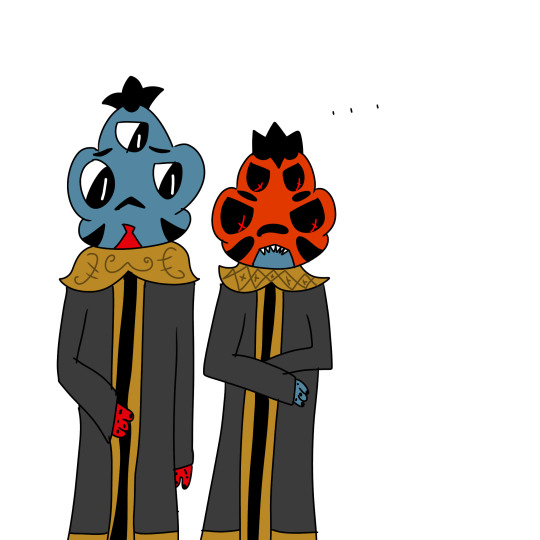

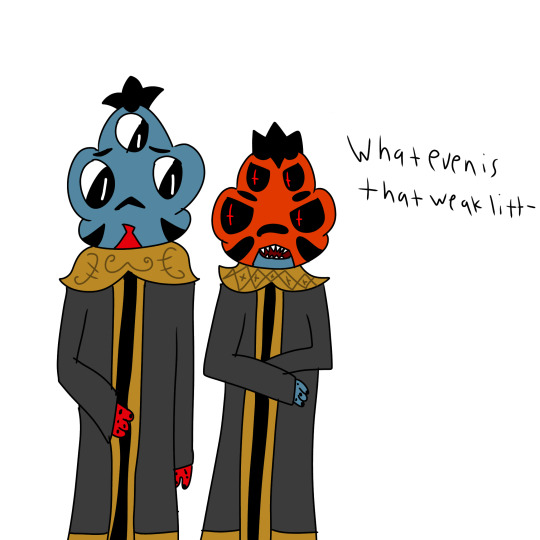

35 notes
·
View notes
Text
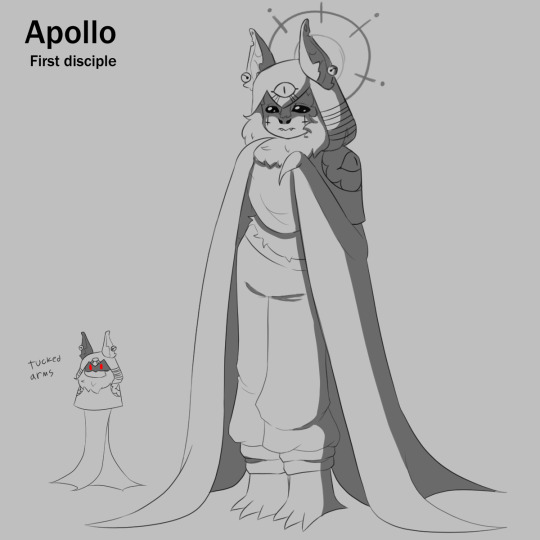
Can you tell i love bats-
#cotl oc#cotl follower#cult of the lamb#I like the idea of all disciples wearing bells in some way shape or form#I based apollo on the arizona myotis#they also couldnt find correct fitting clothes#they too smol
43 notes
·
View notes
Text



Favorite screenshots from this game, pfft
#Cult Of The Lamb#COTL#Narinder#Leshy#Heket#The Lamb#Apollo#I call The Lamb Apollo because Lambert and Lammy are uncreative names bro#The Lamb is Apollo here thank youu
75 notes
·
View notes
Text
𝗔𝗽𝗵𝗿𝗼𝗱𝗶𝘁𝗲: Perse, my daughter is dating your daughter...
𝗣𝗲𝗿𝘀𝗲𝗽𝗵𝗼𝗻𝗲: And my son is dating your son too Aphro.
𝗕𝗼𝘁𝗵: *hugging and sobbing*
𝗭𝗲𝘂𝘀: .... Since when do you both have sons and daughters...?
𝗛𝗲𝗿𝗮: They are talking about Athena dating Artemis and Apollo dating Ares...
Tagging the members of the cult
@withlovefromolympus @0lympian-c0uncil
#artemis x athena#ares x apollo#the cult is growing stronger#artemis#apollo#athena#ares#zeus#hera#aphrodite#persephone#greek mythology#greek gods#incorrect mythology#mythology memes#incorrect quotes
381 notes
·
View notes
Text

my pen pressure broke so i have to do shit in ms paint today. todays been a really, really good day
#lackadaisy#lackadaisy fanart#freckle#lackadaisy freckle#lackadaisy mordecai#mordecai heller#cult of the lamb#cult of the lamb fanart#cotl#cotl fanart#cult of the lamb narinder#narinder#poppy playtime#poppy playtime fanart#poppy playtime catnap#catnap#caffienecat#apollo#monarchstar#my art
67 notes
·
View notes
Photo
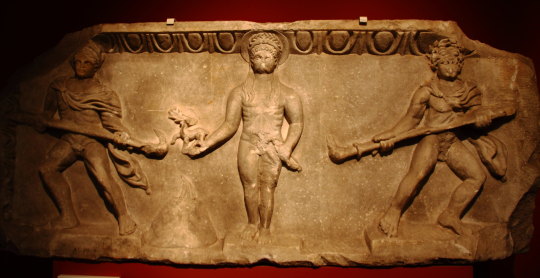
Relief depicting Apollo - made out of marble and dating back to the year 175-200 A.D., this relief shows Apollo between two torch bearers. This object was found on the rear facade of the stage building of the theatre in Miletus.
Photo credit: Leonardo
#AES : ANTIGÜEDADES 💎#ancient art#ancient greek art#ancient greek sculpture#ancient relief#apollo#apollo relief#apollo cult#ancient miletus
50 notes
·
View notes
Text
gives you this dumbass butterfly

7 notes
·
View notes
Text
Apollo: Bro, why do you have a cult?
Dionysus: I’m a drunk. I don’t know how I do anything.
#greek mythology#dionysus#apollo#the simpsons#incorrect quotes#incorrect greek gods#cult of dionysus#greek myth#aaron’s post
114 notes
·
View notes
Text
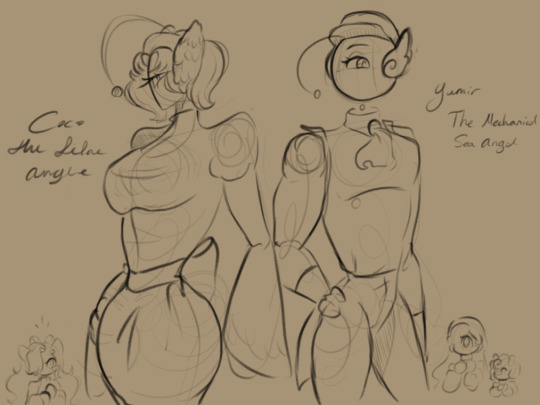




Some upcomming characters
37 notes
·
View notes
Text
I love seeing people devoted to Apollo and Dionysus.

108 notes
·
View notes